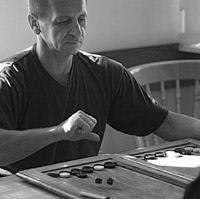It turns out that the Armenian women averagely spent more time on education than men. Thus, if the man daily spends 36 minutes on education then the women allot 43 minutes for that purpose. However, it turns out that the lack of education doesn’t become an obstacle for men to spend much more time on profitable jobs (men daily spend 4 hours 51 minutes and women 1 hour 41 minutes). These data were provided by the National Statistics Service of Armenia (NSS) – “On Time Use Sample Survey in the Republic of Armenia 2008 October 1-31” report. However, the statistics didn’t leave any space for the men to brag about. According to them the figures for housework, family care or unpaid work also differ between the sexes with almost 5 hours and 12 minutes for women and 1 hour and 3 minutes for men. Most people (96% of women and 53% of men) undertook some form of housework and family care during everyday life. The total work (the sum of paid and unpaid work) amounts to 5 hours and 54 minutes for men and 6 hours 53 minutes for women. In other words, the time spent on productive activity differs between the sexes (women spend 1 hour more than men) and takes up from 25% to 29% of the 24 hours in the day in total. By reading these figures the impression is that the unemployment rate in Armenia is higher than the official data. In the classical meaning unemployment can be considered not only the case when the person doesn’t have a job but also his partial employment. If we consider that the average working hours make 8 hours then it turns out that the men is daily busy with gainful work only 60% of the day and the woman – 25%. The thing is that these numbers are drawn as an average for the men and women aging 15-80 years old. They don’t consider whether these groups are busy with gainful work or not. It means that for the calculation of this index includes both employed people with average aging and the indices of pensioners, who stay home all day. According to the NSS report during the day 33% of women are occupied and 60% of men. And if the calculation is done for these exact groups then it turns out that the average working day for men is 8 hours and 8 minutes and for women the time is 5 hours and 4 minutes. The data on how much time the women and men of Armenia daily spend on various activities may be found in the table, where it’s seen that men spend an average of 1.5 hours more free time than women. We hope that the unclear organizations in charge of women’s issues won’t make these data a starting point at any conversation they start. Let us mention for them specially that over half of the men (53%) are in charge of housework and family care. Of course men averagely allot only 2 hours a day for that compared to 5 hours 24 minutes of women. But this is not bad either. As a result of the survey on weekdays the difference of hours between women and men is much less. By the way, most part of the free time is spent on the spending of passive time – that is watching TV.
Let us also mention that there is essential difference between rural and urban communities in terms of allocation of time. For example in rural communities 72% of men are occupied by gainful work and in urban communities – 54%. As of women the difference is more drastic – in rural communities 50% and in the cities – 26%. But on the other hand the city residents daily spend more time working than in villages. In urban communities the women spend an average of 6 hours 11 minutes on gainful work. And men spend 9 hours 16 minutes on gainful work. Meanwhile the picture is the following in the rural communities – women 3 hours 46 minutes, men – 6 hours 28 minutes. Moreover, in parallel with this, in rural communities men spend more time on family care and household (2 hours 37 minutes) than the city population (2 hours 37 minutes). The research also reflected such facts, which are more or less known to everyone. For example, after marriage the man starts to spend more time on gainful work and the woman spends more time with the family. According to the research results, in the case of noble men the comparably less spending on work reaches its maximum in the groups of married/jointly living people especially among men, who have children up to 6 years of age. As for married women they spend 2.3 times more time on the family care than the ones, who are not married and don’t have children. And the duration of the free time is respectively 1.4 times less.

